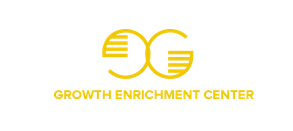
Uncovering your unique strengths may seem like a challenging task, but with the right guidance, it can be a rewarding journey towards self-discovery and personal growth. By peeling back the layers of your abilities and traits, you can uncover hidden talents that have the potential to shape your future in profound ways. Understanding what sets you apart and how to harness those strengths effectively is not only empowering but can also lead to fulfilling opportunities that align with your authentic self.
Leveraging Your Existing Strengths
Leverage your existing strengths by identifying your top abilities and aligning them with job opportunities that showcase your unique talents. Start by delving into tools like StrengthsFinder 2.0 or the Myers-Briggs Typing Index to pinpoint your key skills and strengths. Recognizing what sets you apart is essential in the development of your career. Seek out opportunities that utilize your strengths, allowing you to excel and grow professionally.
Creating a personal development plan with SMART goals will help you focus on honing and utilizing your strengths effectively. Tailor your resumes and cover letters to highlight these strengths, making you stand out to potential employers. By leveraging your existing strengths, you can lead projects and make a positive impact in your work environment.
Embrace this guide to discovering and leveraging your unique abilities, paving the way for opportunities for growth and success in your career.
Seeking Feedback From Trusted Sources
When seeking feedback from trusted sources, consider the valuable insights that can aid in your self-discovery and enhance your self-awareness. Feedback from others, such as family, friends, colleagues, and mentors, plays an essential role in discovering your strengths and talents. By seeking feedback, you can identify areas where you excel and uncover unique strengths that you may not have realized on your own. Honest opinions from those who know you well can provide a different perspective on your personality and strengths, helping you gain a more thorough understanding of yourself.
Seeking feedback isn't about seeking validation but rather about gaining a deeper understanding of your capabilities. External feedback complements self-assessment, offering a well-rounded view of your talents and strengths. Embrace the feedback you receive, both positive and constructive, as it can guide you towards personal growth and development. By actively seeking feedback from trusted sources, you're taking proactive steps towards realizing your full potential.
Identifying Your Personality Traits

Uncovering your personality traits is an essential step towards understanding yourself and making informed decisions for your future. By identifying your unique abilities and characteristics, you pave the way for personal development and professional success.
To effectively reveal your personality traits, consider the following:
- Self-Reflection: Take time to reflect on your behaviors, preferences, and reactions in different situations to gain insight into your personality.
- Personality Assessments: Utilize tools like the Myers-Briggs Typing Index to categorize your traits and understand how they shape your interactions and choices.
- Alignment with Career Choices: Matching your personality traits with suitable career paths can lead to fulfilling professional development and enhance your chances of success.
Understanding your strengths and weaknesses through self-discovery is a vital aspect of personal growth. Embrace this journey of identifying your personality traits to reveal your full potential and make informed decisions that align with who you truly are.
Discovering Enjoyable Activities
To discover your unique strengths, start by exploring activities that bring you joy and fulfillment. Make a list of your top five enjoyable activities. Consider why these activities resonate with you. Do you enjoy problem-solving, connecting with others, or creating something new?
Reflect on the underlying skills that make these activities enjoyable. Look for recurring themes among the activities you love. These patterns can reveal your natural talents and strengths. Understanding the skills required for these activities can help you identify where your strengths lie.
Analyzing Patterns in Feedback

Analyze feedback from diverse sources to uncover recurring themes that shed light on your unique skills and qualities. Seeking input from friends, family, colleagues, and mentors allows you to gain a variety of perspectives on your strengths. By compiling and analyzing this feedback, you can identify patterns that highlight your special abilities, providing valuable insight for personal and professional growth.
- Identify Strengths: Look for common themes in the feedback you receive to pinpoint your unique skills.
- Leverage Insights: Use the feedback to understand how others perceive your strengths and leverage this insight for personal and professional development.
- Make Informed Decisions: Valuable feedback can guide you in making informed career decisions by providing clarity on your strengths.
Recognizing recurring themes in feedback can help you uncover your unique strengths and align them with your career aspirations effectively.
Frequently Asked Questions
How Do You Uncover Strengths?
To uncover strengths, reflect on past successes and seek feedback from others. Use tools like StrengthsFinder to identify key traits. Evaluate how strengths contributed to achievements. Create an action plan to leverage strengths effectively.
How Do I Turn My Strengths Into Opportunities?
Open doors with your strengths. Embrace challenges that showcase your abilities. Seek advice, set targets, and wield your talents boldly. Let your strengths be the beacon that guides you to new opportunities and success.
What Are the Five Steps in the Process of Assessing Personal Strengths and Weaknesses?
Reflect on enjoyable tasks and proudest achievements. Seek feedback from others. Create SMART goals for development. Align strengths with opportunities. Review and adjust your plan regularly. This process helps identify your strengths and areas for improvement.
What Are the Top 3 Work Related Strengths?
You excel in leadership, problem-solving, and communication. Embrace these strengths for career growth and satisfaction. Self-assessment and feedback reveal your potential. Leverage these strengths for productivity and success. Your strengths shape a fulfilling career.
Conclusion
To sum up, by following the steps outlined in this guide, you can discover your unique strengths and unleash your full potential.
For instance, Sarah, a recent college graduate, used feedback from her professors and peers to uncover her strong communication skills. She then pursued internships and volunteer opportunities that allowed her to further develop this talent, ultimately leading her to a successful career in public relations.
Embrace your strengths and watch your opportunities grow.

